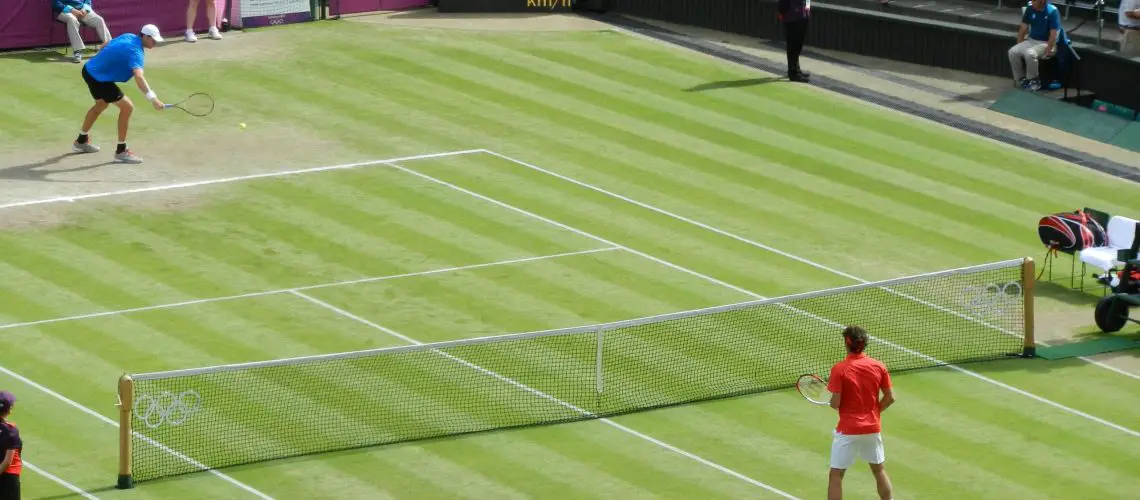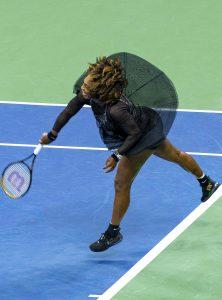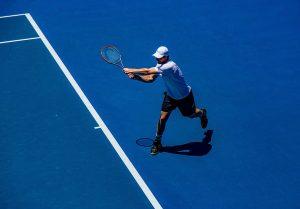We may earn money or products from the companies mentioned in this post.
Introduction

Greetings, dear reader! Today, we embark on a journey into the world of tennis leg Have you ever wondered what this mysterious condition is all about? Well, worry no more, for I am here to enlighten you
Definition of Tennis Leg
Tennis leg is not just a term reserved for athletes on the court; it can affect anyone who pushes their physical limits This condition refers to a sudden injury or strain in the calf muscle during physical activity Ouch!
1 Symptoms and diagnosis
When tennis leg strikes, it announces its presence with sharp pain in the back of your lower leg You might also experience swelling and bruising around the affected area If these symptoms sound familiar, it’s time to consult a healthcare professional who can diagnose your condition accurately
2 Common causes
Tennis leg often occurs when the calf muscle (specifically the plantaris muscle) tears partially or completely This can happen during activities that involve explosive movements like jumping or sprinting So be cautious when engaging in such vigorous endeavors!
Importance of proper treatment
Ah, yes, my friend – proper treatment is crucial for overcoming tennis leg and getting back on your feet (quite literally). Ignoring this condition or attempting self-treatment without medical guidance may lead to further complications or delayed recovery
By seeking appropriate care from a healthcare professional, you can ensure that you receive an accurate diagnosis and an effective treatment plan tailored to your specific needs
Scope of the article
In this article, we will delve deeper into tennis leg – exploring its causes and risk factors, discussing various treatment options, and providing helpful tips for prevention So, stick around and let’s unravel the mysteries of tennis leg together!
Preventive Measures for Tennis Leg

Tennis leg is a common injury that can put a damper on your tennis game and overall physical activity But fear not, there are preventive measures you can take to minimize the risk of developing this painful condition By incorporating warm-up exercises and strengthening routines into your fitness regimen, you can keep tennis leg at bay and enjoy playing without any setbacks
Importance of prevention
Prevention is always better than cure, especially when it comes to injuries like tennis leg Taking proactive steps to protect yourself from potential harm can save you from experiencing unnecessary pain and downtime By investing time in preventive measures, you ensure that your body is adequately prepared for the demands of high-intensity activities like tennis
Warm-up exercises before playing tennis or engaging in high-intensity activities
Prioritizing a proper warm-up routine is crucial before engaging in any physically demanding activity, including playing tennis Here are two essential warm-up exercises that should be a part of your pre-game ritual:
-
Dynamic stretching:
Dynamic stretching involves active movements that mimic the motions used during the activity itself This helps increase blood flow to the muscles and improves flexibility, reducing the risk of strains or tears -
Aerobic exercise:
Engaging in light aerobic exercises such as jogging or brisk walking for 5-10 minutes raises your heart rate and warms up your muscles further, preparing them for more intense physical exertion
Strengthening exercises targeting calf muscles and surrounding areas
In addition to warming up properly, it’s essential to strengthen the specific muscles involved in preventing tennis leg injuries Pay special attention to your calf muscles and the surrounding areas Here are two effective strengthening exercises you can incorporate into your routine:
-
Resistance training:
This involves using resistance bands or weights to target and strengthen the calf muscles Performing exercises like calf raises or seated calf raises can help build strength and stability in these crucial areas -
Plyometric exercises:
Plyometric exercises, such as jump squats or box jumps, focus on explosive movements that enhance power and agility These exercises not only strengthen the calf muscles but also improve overall lower body coordination and balance
By regularly including these warm-up and strengthening exercises in your fitness routine, you can significantly reduce the risk of developing tennis leg Remember, prevention is key to maintaining a healthy and active lifestyle!
Immediate Treatment and Pain Management

When it comes to managing pain from an injury, immediate treatment is crucial One effective method that can be used is the RICE method, which stands for Rest, Ice, Compression, and Elevation
Rest: Limiting activities to avoid further injury
In order to promote healing and prevent additional damage, it’s important to rest the injured area This means avoiding activities that may exacerbate the pain or cause further harm By giving your body time to recover, you can help speed up the healing process
Ice: Applying cold therapy to reduce inflammation and pain
Ice therapy is a simple yet effective way to alleviate inflammation and reduce pain Applying an ice pack to the injured area helps constrict blood vessels and decrease swelling It’s recommended to apply ice for about 15-20 minutes every 2-3 hours initially, then gradually increase the interval as needed
If you don’t have access to an ice pack, there are alternative methods you can try For example, you could use a bag of frozen vegetables or wrap some crushed ice in a thin towel before applying it to the affected area
Compression: Using compression bandages or stockings
Compression therapy involves using bandages or stockings to apply pressure on the injured area This helps reduce swelling by preventing fluid buildup and promoting proper blood circulation When applying compression, it’s important not to wrap too tightly as this may impede blood flow
To properly apply compression bandages or stockings, start at the furthest point from your heart (eg, toes) and work your way up Make sure each wrap overlaps by about half its width for even pressure distribution
However, there are instances when compression therapy should be avoided If you have any circulatory disorders or conditions that may affect blood flow, it’s best to consult with a healthcare professional before using compression
Elevation: Raising the injured leg above heart level
Elevating the injured leg above heart level can help reduce swelling and promote fluid drainage This is particularly effective for lower limb injuries To properly elevate your leg, lie down and prop it up on pillows or cushions Aim to keep your leg elevated as much as possible during the day
When elevating your leg, remember to keep it comfortably supported and avoid putting excessive pressure on any specific area This will help ensure optimal results
Pain Relief Medication

In addition to the RICE method, pain relief medication can also be used to manage discomfort and inflammation One common type of medication is nonsteroidal anti-inflammatory drugs (NSAIDs). These include ibuprofen and naproxen sodium, which can help alleviate pain and reduce inflammation However, it’s important to note that NSAIDs may have side effects such as stomach irritation or increased risk of bleeding, especially when taken in high doses or for an extended period of time
If you choose to use over-the-counter medications for pain relief, it’s important to follow the recommended dosage instructions and consult with a healthcare professional if you have any concerns or questions
Advanced Treatments and Rehabilitation Techniques

When it comes to recovering from an injury, seeking the guidance of medical professionals is crucial Physical therapists and sports medicine specialists are experts in their field who can provide valuable insight and personalized treatment plans
Consultation with medical professionals
Physical therapists play a vital role in helping individuals regain strength, mobility, and function after an injury Through hands-on techniques, therapeutic exercises, and specialized equipment, they create individualized programs that address specific needs and goals
Sports medicine specialists focus on treating injuries related to sports or physical activities They have extensive knowledge of the musculoskeletal system and use advanced diagnostic tools to determine the severity of an injury With this information, they can recommend appropriate treatment options for optimal recovery
Range-of-motion exercises
Gentle stretching exercises are essential for improving flexibility and restoring range of motion These exercises help prevent stiffness in the injured area and promote healing by increasing blood flow It’s important to follow guidelines provided by medical professionals on when to start these exercises after an injury to avoid further damage
Progressive strengthening exercises
To rebuild strength in injured muscles or joints, progressive strengthening exercises are implemented This involves isometric muscle contractions that target specific areas for improved stability and functionality Gradual resistance training is then introduced to gradually increase muscle load and promote tissue repair
Returning to sports and physical activities
The desire to get back into sports or physical activities can be strong after an injury; however, it’s crucial to follow guidelines provided by medical professionals on when it is safe to resume these activities Rushing back too soon can lead to reinjury or further complications
In addition to following professional advice, there are also tips for preventing reinjury These include proper warm-up and cool-down routines, wearing appropriate protective gear, listening to your body’s signals, and gradually increasing activity intensity
Overall, advanced treatments and rehabilitation techniques are instrumental in helping individuals recover from injuries effectively By consulting with medical professionals, engaging in range-of-motion and strengthening exercises, and following guidelines for returning to sports or physical activities, individuals can achieve optimal recovery and minimize the risk of reinjury
Conclusion

In conclusion, understanding the key points, importance of proactive measures in treating tennis leg, and the need for seeking professional guidance are crucial for a successful recovery
Summary of Key Points
Throughout this article, we have explored various aspects of tennis leg We began by defining the condition as a strain or tear in the calf muscles due to excessive stress We then discussed the common causes, including sudden movements or overuse during sports activities
Next, we delved into the symptoms of tennis leg, such as pain and swelling in the calf area It is essential to recognize these signs early on to avoid further damage and complications
We also emphasized the importance of immediate treatment for tennis leg to prevent long-term consequences Resting, applying ice packs, compressing the affected area with bandages, and elevating the leg can provide initial relief and reduce inflammation
The Importance of Proactive Measures in Treating Tennis Leg
Treating tennis leg requires more than just temporary relief; it necessitates proactive measures to promote healing and prevent future occurrences Physical therapy plays a vital role in rehabilitating injured muscles and restoring their strength and flexibility
A comprehensive rehabilitation program may include exercises targeting muscle strengthening, stretching, balance improvement, and proprioceptive training These exercises help rebuild muscle fibers and enhance their ability to withstand stress during physical activities
In addition to physical therapy exercises, other proactive measures can aid in the recovery process Using orthotic devices like heel pads or shoe inserts can provide better support to alleviate strain on calf muscles while engaging in sports or daily activities
Encouragement to Seek Professional Guidance and Take Recovery Seriously
If you suspect that you have sustained a tennis leg injury or experience persistent pain and swelling in your calf, it is crucial to seek professional guidance A healthcare provider or sports medicine specialist can accurately diagnose the condition and provide appropriate treatment options
Remember that self-diagnosis or self-treatment can lead to complications and delay your recovery By consulting a professional, you will receive tailored advice and a personalized treatment plan that addresses your specific needs
Finally, taking recovery seriously is essential for a successful outcome It may require patience, dedication, and adherence to the prescribed treatment regimen By following medical advice and actively participating in rehabilitation exercises, you enhance your chances of returning to your favorite activities without limitations
In conclusion, tennis leg should not be taken lightly Understanding the key points of this condition, recognizing the importance of proactive measures in treating it, and seeking professional guidance are vital steps towards a full recovery So take charge of your health, consult an expert, and commit yourself to the journey of healing
Useful Links

Tennis Leg | White Plains, MD | Family Foot Center
Tennis Leg
Tennis leg: Cause, Symptoms, Diagnosis, Treatment
Do you Suffer from Tennis Leg?
Calf strain: what all athletes should know about diagnosis, …
“Tennis leg”: gastrocnemius injury is a far more common …
Tennis Leg | Colorado Sports Doctor
Pulled Calf Muscle: Treatment, Symptoms & Recovery
Calf Strain
What is Tennis leg? – YouTube
Calf Strain
Medial Gastrocnemius Strain Overview and Treatment
Understanding Gastrocnemius Muscle Tear
Tennis Leg : American Journal of Physical Medicine …
Tennis Leg Symptoms & Treatment – Back to Function
How to Prevent and Treat Common Tennis Injuries
Off the Courts: Occupational “Tennis Leg”
Tennis Leg
Tennis Leg – Calf Muscle Injury
Medial Gastrocnemius Strain – Justen Elbayar, MD






